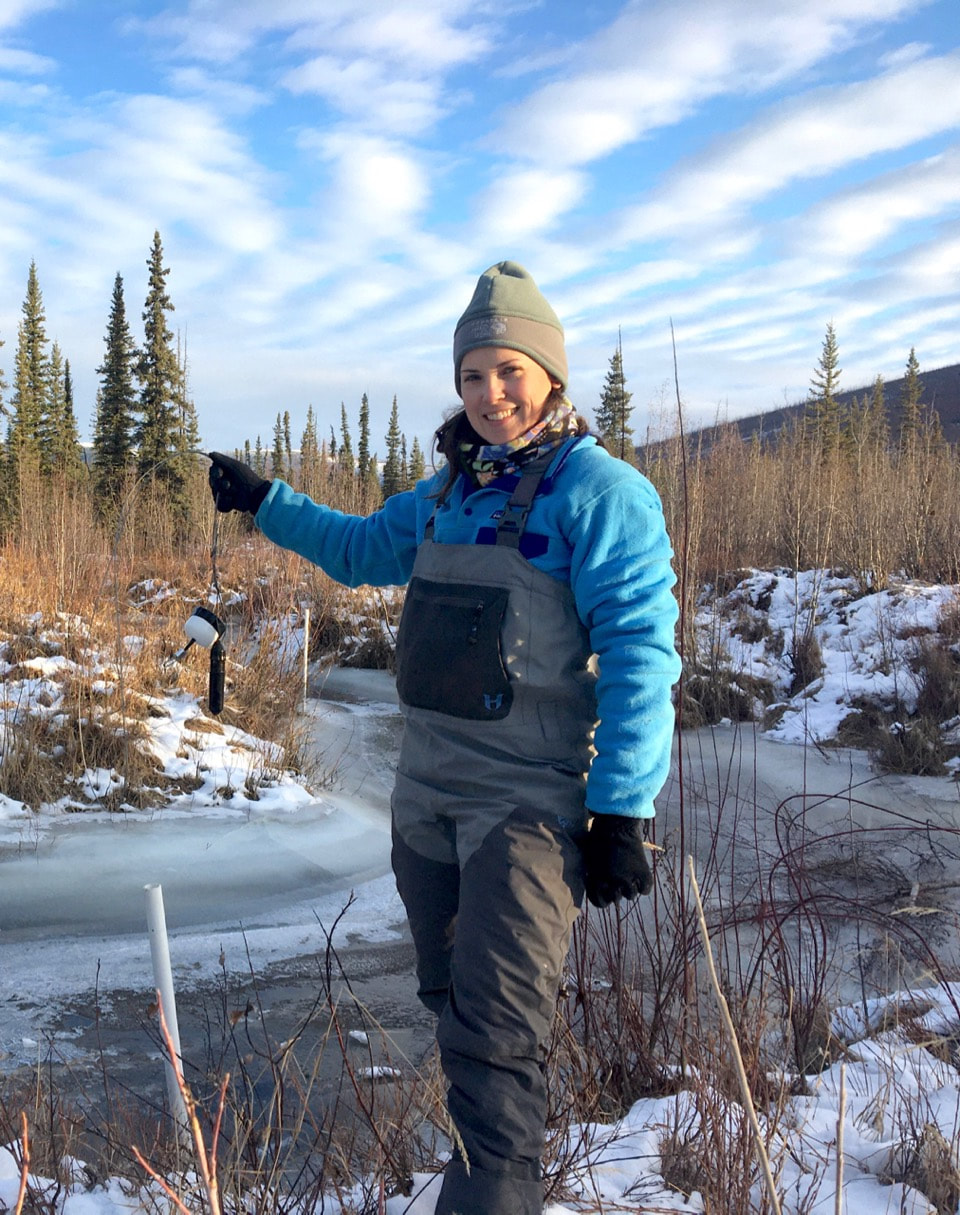Ecohydrology addresses the interface of the hydrologic cycle and ecosystem processes. My particular interest in ecohydrology is in how water contributes to transport and transformation of carbon and nutrients.
What are your undergraduate and graduate degrees in?
- B.S. in Microbiology and Ecology, Evolution, & Conservation Biology from the University of Washington
- M.S. and Ph.D. in Biology (Ecology) from Arizona State University
How did you arrive at working in/thinking about ecohydrology?
My research interests have always been focused on streams and land-water interfaces. When I learned about the small watershed approach it seemed like a natural way of characterizing the sum total of ecosystem processes, and this approach requires understanding something about how flows of water transport materials. From there it was clear from data I collected in desert riparian zones that water was not just transporting materials but also influencing transformations of carbon and nutrients.
What do you see as an important emerging area of ecohydrology?
I think a lot about how hydrologic flowpaths that connect patches within ecosystems or across regions alter the transport and transformation of materials. The timing, magnitude, and routing of flowpaths are changing rapidly in many places and we know little about the ecohydrological outcomes of changing flowpaths. In regions with permafrost, for example, thaw of permafrost can result in deepening of flowpaths that may bypass the rooting zone or intersect and export previously frozen soil nutrients. Thaw of permafrost might also result in evolution of new channel networks that redirect hydrologic connections between hillslopes and receiving streams, lakes, and coasts, or serve as efficient conduits for dissolved greenhouse gases to the atmosphere. A wide open question here is how changes in flowpaths might alter feedbacks between flowpaths and carbon or nutrient cycles.
Do you have a favorite ecohydrology paper? Describe/explain.
One of my favorite ecohydrological concepts is that biogeochemical reactions occur simultaneously with hydrologic transport. This is described by the “nutrient spiraling concept,” which was defined by stream ecologists. But this is not a stream-specific concept, as reaction and transport occur in all ecosystems. Wagener et al. (1998) point out the relevance of nutrient spiraling in soils, emphasizing differences in dominant spatial and temporal scales of transport relative to the scale of our observations in soils and streams.
Wagener, S., Oswood, M., & Schimel, J. (1998). Rivers and soils: parallels in carbon and nutrient processing. BioScience, 104–108.
What do you do for fun (apart from ecohydrology)?
Travel, explore new cities. I enjoy time with my child.

 RSS Feed
RSS Feed